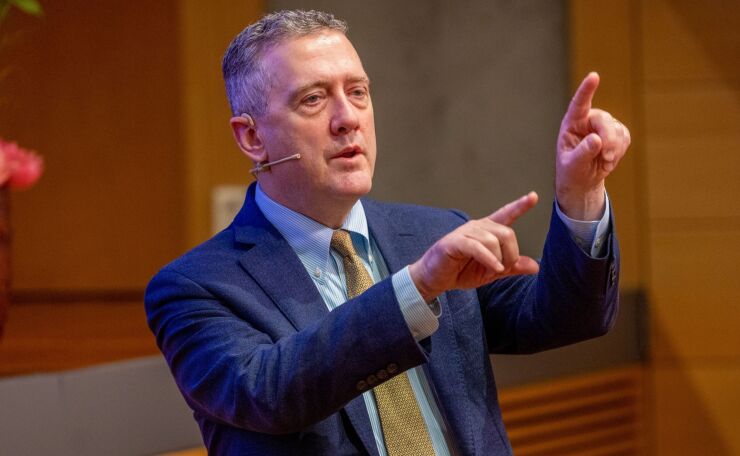
The Federal Reserve Bank of St. Louis is looking for someone with "respected credentials in macroeconomics" to be its
The
The candidate profile portion of
Economic acumen is emphasized throughout the posting, not only as part of the future president's rotating participation in the central bank's monetary-policy-setting arm — the Federal Open Market Committee, or FOMC — but also as a thought leader and steward of the Federal Reserve Economic Data, or FRED, system, one of the largest publicly available economic databases in the world.
"The search process will be robust, transparent, fair and inclusive," Jim McKelvey, chair of the St. Louis Fed board of directors and chair of its presidential search committee, said in a statement. "The search committee is focused on finding the next great leader of the St. Louis Fed — someone distinctly qualified to advance its mission to promote a healthy economy and financial stability and further the bank's long-standing reputation for leadership and impact."
The top position at the St. Louis Fed has been vacant since last month, when then-President
Bullard, who led the St. Louis Fed for 15 years, was a Ph.D. economist and an
Reserve banks are governed by three sets of directors: Class A, those affiliated with member banks in the district; Class B, those picked by member banks to represent the public; and Class C, those picked by the Fed Board of Governors in Washington to represent the public. Only Class B and C directors are involved in the presidential search process to avoid conflicts of interest, as the chosen president will ultimately oversee supervision of the member banks.
The board of governors has the final say in approving or disapproving a presidential nominee, but search committees are given a wide berth to make a recommendation. Often they choose from the reserve bank's own ranks. Bullard, for example, started his career as a researcher at the St. Louis Fed in 1990, gradually rising in the organization to become vice president and deputy director of research for monetary analysis before being tapped for the top job.
Yet it is not uncommon for reserve banks to look outside. Patrick Harker, president of the Federal Reserve Bank of Philadelphia, is an engineer by training and spent much of his pre-Fed career as an academic. Neel Kashkari, who leads the Federal Reserve Bank of Minneapolis, also has an engineering background but worked in finance before being tapped for a Treasury Department position under President George W. Bush.
Reserve bank presidents are tasked with overseeing economic conditions in their districts through data tracking and research, supervising banks and operating key parts of the U.S. financial system.
Certain reserve banks have shown a preference for presidents with particular backgrounds. The Federal Reserve Bank of Kansas City ended its record 15-month search for a president by
The St. Louis Fed oversees the Fed's 8th district, which covers much of the central part of the U.S., including all of Arkansas and parts of Illinois, Indiana, Kentucky, Mississippi, Missouri and Tennessee. The bank has 1,400 employees with branches in Little Rock, Louisville and Memphis.
The St. Louis Fed president has a voting position on the FOMC every three years. It will be an alternate next year and will get a vote in 2025.
The search committee did not include a deadline for submitting applications. The private executive search firm Spencer Stuart has also been hired to aid in the hiring process.






